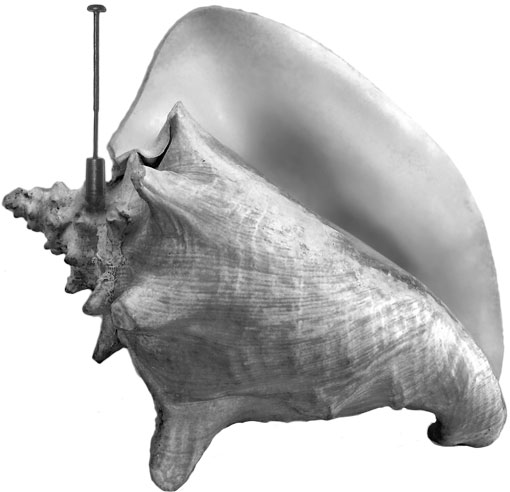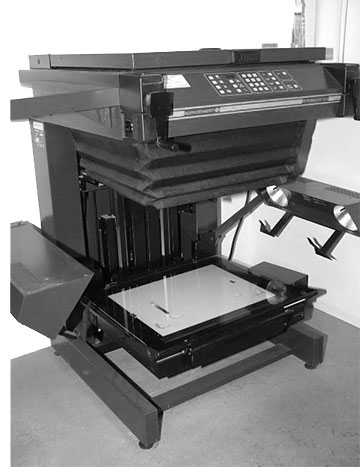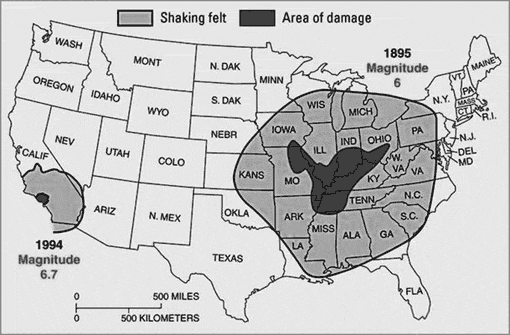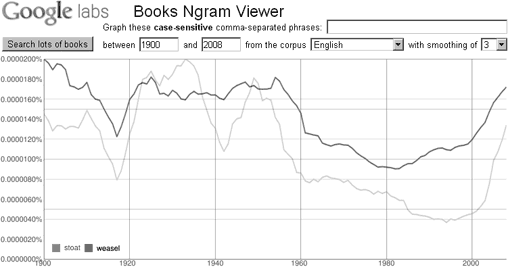Wave g’bye to privacy, folks!

Saw this at a country show over the weekend. It’s the size of a pizza box. It will hover, stable and nearly silent, from a few inches to dozens of feet high. It will run for twenty minutes on a battery. It will send video back in real time. It has built in GPS. If it loses signal or runs low on juice, it returns to the place it was launched and lands.
The owner had only taken delivery a couple of hours before and had never run an RC vehicle before, and he was driving it like a champ. I asked how far he’d managed to send it, and he pointed to a clump of trees I reckon were a quarter mile away.
The base unit is £499, no doubt cheaper in the States (it’s American made Chinese made, Uncle B reminds me. I think the company’s American, though).
And yes, it comes in black.
June 4, 2013 — 9:33 pm
Comments: 50
Don’t kick that pickle, lady!

Whatever. No, I don’t know, either. I stole the picture from Anorak because I pretty much got nothing.
I’ve spent the evening getting my father Skype’d up. Or, anyway, the iPad equivalent of Skype, Tango.
He’ll be 86 soon and he’s newly unleashed on the internet. He had a laptop for ages, but he kept getting it snarled up and finally gave up on it. He can just about grok the iPad.
So today I rummaged around in the back room and found my old webcam (so old there isn’t a Windows 7 driver for it), downloaded this piece of videophone ‘ware and gave him a call.
He was stonked. It was like ten minutes of, “I can see you! Can you see me? I can see me! Can you see me? I’m down in a little block in the left corner and you’re all over the screen! It rang just like a real phone. I heard it and everything! I can see you! And you’re in England!”
Which was funny and sweet. And then he rang off, “this is great! We can watch opera together and I can teach you to play the harmonica and everything!”
So, there’s that.
October 1, 2012 — 9:54 pm
Comments: 18
Science!

Good news! Scientists at Cambridge University have succeeded in making artificial nacre. That’s mother o’ pearl to you and me.
It’s fairly easy to make something structurally similar — it’s just layers of calcium carbonate — but this is the first time they’ve gotten a result that iridesces like pearl. They did it by closely mimicking the processes a real mollusc uses to lay down shell.
This is good. MoP is strong and useful and, naturally, beautiful. And they say their process is cheap.
If you don’t see the value in that, I’ve got four words for you: mother of pearl cellphones.
Or, you know, five words if you think “cell phone” should be two words.
August 7, 2012 — 10:13 pm
Comments: 41
That’s my stat camera!

As I’ve mentioned before, I started my career in commercial art a handful of years before computers began making in-roads into graphics. That means I had to learn to do everything one way, and watch as, bit by bit, computers swept away most of the jobs I had just learned to do.
It was awesome.
If the bomb ever strikes, we will never go back to doing things the old way again. Pre-digital printing technology was as complex and far more time-consuming and expensive as anything you can do with a computer. It was all photographic materials and layers and fiddly alignment tools and calculation charts and masking. In a lot of ways, it was fun — sort of a cross between flower arranging and carpentry — but it was a whooooole lot of work.
Anyhow, someone on an art forum posted a link to the Museum of Forgotten Art Supplies. If you’ve ever taken so much as a mechanical drawing class in High School, you will recognize and (I hope) enjoy paddling around in this collection. The sheer amount of junk we need to do our jobs was staggering.
So many old friends <sniff>
February 28, 2012 — 11:39 pm
Comments: 27
Speaking of earthquakes…

Meet my favorite doomsday scenario, the New Madrid fault. It runs along the border between Missouri and Tennessee. The chart compares the relative impact of the Northridge earthquake of 1994 to a quake along the New Madrid fault in 1895.
But 1895 wasn’t a biggie for New Madrid. Oh, dear me, no. We’re coming up to the 200th anniversary of the biggest seismological event in recorded history.
Between December of 1811 and March of 1812, thousands of quakes shook along the NM fault, including four spectacularly large ones. Church bells rang in Boston. The Mississippi River ran backwards for hours. An Indian village was swallowed whole. Reelfoot Lake, essentially a huge pothole, just appeared. Tens of thousands of acres of forest were flattened.
I’ve never heard an estimated death toll for these quakes. Many people just disappeared (along with their houses, in some cases — some cracks in the earth were five miles long). But that part of the country was very, very sparsely populated in 1811.
If it happened today? You could kiss Memphis goodbye, for a start.
August 24, 2011 — 8:27 pm
Comments: 27
Something to chew on for the weekend…

Okay, this is kind of neat. Project Euler is a website that hosts series of individual, discrete math problems (currently 344 of them) that each require a short computer program to solve. Individual problems builds on concepts in previous ones, so the idea is that you quietly learn both math and programming as you go along.
To be honest, if I had run across this on my own, I’d’ve been all “yuck, math! Ew gross, programming!” but I read this article in the Atlantic that made it sound like a lot of fun and…it kind of is. I’ve done five and I enjoy it — when I have a CLUE where to start.
I cheated on Problem 3. I was looking for methods and accidentally found the actual answer, but I was floundering anyhow. I still don’t understand why my answer wasn’t right. But, hey, turns out I independently invented the Sieve of Eratosthenes trying to figure it out, so I worked out something a chiton-wearing olive-slurping boo-boo knew two thousand years ago. Yay me, I guess.
Hard to believe my grandma was an algebra teacher.
Good weekend, everyone!
July 29, 2011 — 10:05 pm
Comments: 42
My little USB ‘scope

This is the USB microscope I got for Christmas.
It comes with a small, nicely weighted stand, rubberized body, built-in adjustable LED ringlight and focus knob. It captures .avi video or stills, but I think it’s most fun just letting it rip live. You know, get a little aphid in a specimen jar or something, watch it hop around and…do…bug stuff.
Yes. I would do that.
It’s not a patch on a high-end optical microscope — duh — but it’s not a complete toy, either. I’ve played with my share of low-end Teletubby optics, and this is a gadget worth having.
Yes, I let the aphid go.
May 18, 2011 — 10:29 pm
Comments: 39
You say amoebae and I say amoebas

I’ve written about my microscopy habit before (actually, go read that post instead — it’s got lots of cool links and stuff), but I was going through some old photos and disk and found this montage of amoebas and it brought a tear to my eye.
It took me twenty years to get an amoeba, no lie. And I wanted one so badly.
See, my mother used to talk about her professor in nursing school who had a hay infusion that was decades old. One drop from that was so full of critters, she said, it was more protozoa stew than pond dip.
So I was, like, “right. Got that. The secret is old.” And I made aquariums full of stinky, crusty, nasty hay and bean infusions and nursed them along for months at a time.
These things went through a predictable cycle, even if I fed them fresh ingredients. At the start, I’d get all sorts of interesting, active, sparky protozoa. Then it would degrade to bacteria and boring wormy things. Then it would die and smell like it.
Sooo eventually I rigged up a jar on a string, went out to a local pond and did a proper pond dip. And got an amoeba, first try! I was so excited!
But the next day I was supposed to fly home and visit the folks for two weeks. Arrgh! I did the best I could to preserve it; I put the sample in a bowl in the basement (cool and damp), covered it and hoped for the best.
When I got back, first slide…dozens and dozens of amoebas. Bloody things had been dividing and subdividing for a fortnight. It was one of the happiest days of my life.
Really.
Oh, god.
May 17, 2011 — 10:58 pm
Comments: 27
Filet of bitch

I don’t know why the Daily Mail floated this story to the top yesterday — it’s a couple of years old — but I hadn’t heard it and we were talking murderers. This is one of the most famous.
Hawley Crippen was a henpecked American doctor living in London with his horrible wife. She disappeared in 1910. When questioned, he told the police she had run off with a man and he was too embarrassed to admit it to their friends.
Then he vanished with his mistress.
So Scotland Yard dug up his cellar and found…a big, amorphous mass of rotting belly skin and a hair curler wrapped in his pajama top.
At trial, the pathologist swore the skin belonged to his wife because it had a recognizable scar. He was hanged.
The case is famous for two things: it was Bernard Spilsbury‘s first major court appearance (if forensic pathologists had rock stars, he’d be the first and biggest). And it was the first case to involve the telegraph wireless, as Crippen was breathlessly followed across the Atlantic by the paper-reading public rather like an Edwardian white Bronco.
Welp, somebody recently dug out the microscope slide of the supposed scar and had some DNA testing done. Not only is the skin not that of Mrs Crippen, it’s not even a woman (the things they can tell from DNA these days).
If you’re interested, you can watch an hour-long PBS program about it online.
I’m not persuaded by the toxicologist’s explanation, but I truly don’t know what to think about the new evidence. One thing we certainly agree on, though — I’ve always thought it exceedingly strange that a man would successfully dispose of all the bones, organs and limbs of his victim and then give up and bury a big, nasty slab of belly skin wrapped in his own PJ’s under the floor next to the kitchen.
January 18, 2011 — 10:11 pm
Comments: 28
Words, meet numbers

Have you seen this thing? So cool.
Google has now digitized 15 million books and this dingus allows you to graph word and phrase frequency over time. Up to five comparisons at once.
So, for example, you can see the handover point when “World War I” replaced “Great War” in literature. Or the exact point “Tiananmen Square” drops out of Chinese books.
It isn’t by a pure word count. It couldn’t be. There were only half a million books published in English before 1900 and a squintillion since then, so any pure word count would make a screaming spike roar up the Twentieth Century. They explain a bit more about how they normalize the data here.
This would have been a great tool to have during the Michael Bellesiles controversy. (Though I still think the simplest way to debunk him would’ve been counting how many cookbooks had recipes for game. Game means guns).
Hold on, hold on, hold on. Y’all are going to go look up wirty dords, aren’t you?
Yeah, I know you people like the back of my hand.
December 16, 2010 — 10:49 pm
Comments: 26











